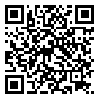Thu, Apr 17, 2025
[Archive]
Volume 20, Issue 3 (September 2024)
IJEEE 2024, 20(3): 38-52 |
Back to browse issues page
Download citation:
BibTeX | RIS | EndNote | Medlars | ProCite | Reference Manager | RefWorks
Send citation to:



BibTeX | RIS | EndNote | Medlars | ProCite | Reference Manager | RefWorks
Send citation to:
Hasanzadeh S, Salehi S M, Saadatmandfar M J. A High Voltage Gain DC-DC Converter Based on Quadratic Boost Converter Suitable for Renewable Energy Resources. IJEEE 2024; 20 (3) :38-52
URL: http://ijeee.iust.ac.ir/article-1-3230-en.html
URL: http://ijeee.iust.ac.ir/article-1-3230-en.html
Abstract: (1363 Views)
Various forms of distributed generation (DG), such as photovoltaic (PV) systems, play a crucial role in advancing a more sustainable future, driven by economic factors and environmental policies implemented by governments. DC-DC converters are essential for harnessing power from solar cells, as they maintain a constant output voltage despite fluctuations in input voltage. Typically, step-up converters are employed to raise output voltage levels, though they often apply the same voltage to an active switch as the output voltage, which can be limiting. To effectively integrate distributed generation sources with the utility grid, high-voltage gain step-up converters are necessary since these sources typically operate at low voltage levels. This study presents an enhanced design of non-isolated DC-DC converters with high voltage gain tailored for photovoltaic (PV) applications. The proposed architecture achieves a quadratic increase in output voltage gain, which alleviates voltage stress on the active switch. Our converter design features a quadratic boost converter complemented by a voltage-boosting cell, facilitating significant voltage amplification. This topology benefits from employing an active switch while minimizing the number of inductors required, resulting in a more compact circuit design. Furthermore, the proposed architecture shares characteristics with recently published topologies regarding passive component utilization, voltage gain, and other relevant parameters. To validate our findings, we conducted mathematical analyses and simulations, with results corroborated by experimental data from laboratory prototype tests.
Keywords: DC-DC Converter, High Voltage Gain, Quadratic Boost Converter, Renewable Energy Resources.
Type of Study: Research Paper |
Subject:
Industrial Electronics
Received: 2024/03/06 | Revised: 2024/10/06 | Accepted: 2024/08/03
Received: 2024/03/06 | Revised: 2024/10/06 | Accepted: 2024/08/03
| Rights and permissions | |
 |
This work is licensed under a Creative Commons Attribution-NonCommercial 4.0 International License. |







